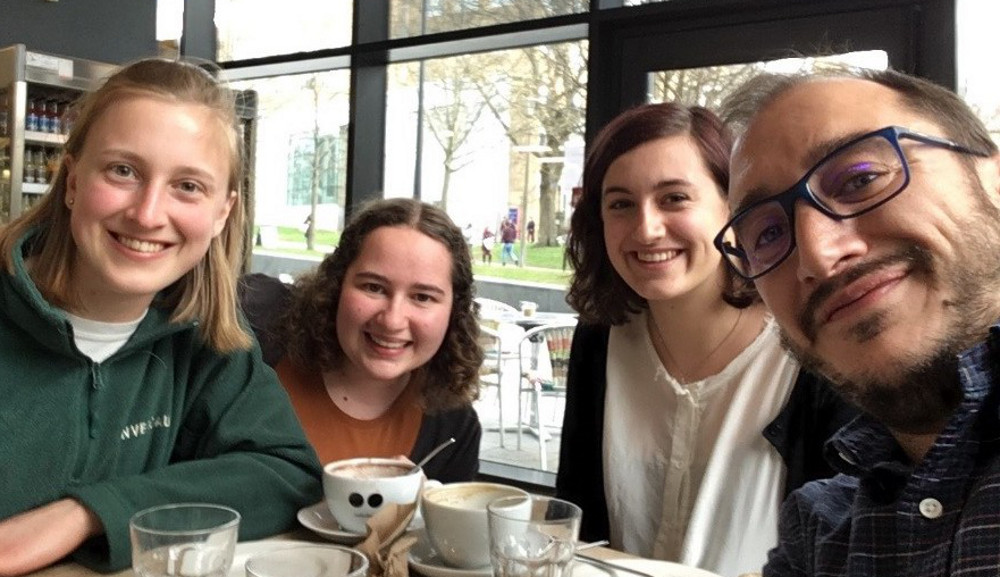
September’s introductory blog post is written by Dr Cathy Bovill, Senior Lecturer in Student Engagement at the Institute for Academic Development. Cathy explores the term ‘student engagement’, before offering an insight into a recent University student engagement initiative: Coffee and Cake Conversations…
Most universities use the term ‘student engagement’ to denote a range of activities aimed at motivating students to study and ensuring students’ voices are heard and acted upon. Yet, defining student engagement is considered challenging and the variety of work described as student engagement in higher education is vast. One common definition sees student engagement as comprised of two key parts:
- The time and effort students devote to educationally purposeful activities
- What institutions do to encourage students to participate in these activities (Kuh, 2009).
Another way of looking at these two sides to student engagement is to think about “students engaging” (what the student does) and “engaging students” (what the institution does) (Bryson 2014, p. 18).
The second element – what the institution does, and how staff relate to students – is key if we are to create an environment consistent with student engagement. Evidence suggests that “in general, the more contact between students and faculty both inside and outside the classroom, the greater the student development and satisfaction” (Kuh & Hu 2001, p. 309). Although this research was done in face-to-face teaching settings, and the assumption is often that the contact outside of class being referred to is face-to-face, I would suggest the principles can also apply to online teaching and contact with students. In other words, the more meaningful the contact and interactions with staff – whether online or face to face, inside and outside of courses – the greater student development and satisfaction.

Earlier this year, I secured funding from the Festival of Creative Learning for an initiative that aimed to increase student and staff contact outside the classroom. The ‘Spring Coffee and Cake Conversations’ initiative aims to help students to develop a stronger sense of belonging and engagement with their School and to break down barriers between staff and students so they relate to one another in a more human way. I sent out an invitation to staff and students across the University in newsletters and mailing lists, asking for volunteers to sign up for free coffee and cake. Over 100 staff and students from 15 Schools signed up. I then paired up a volunteer staff member with a volunteer student from the same School. The student was asked to invite two friends to join the group, and the group was given a voucher/expenses for £25 to go to a coffee shop of their choice. The group was provided with a short list of prompt questions to start the conversation flowing and to ensure there was some preliminary discussion of learning and teaching topics. They were also asked to take a photo of themselves in the coffee shop.
In the end, 14 groups from 11 Schools went out for coffee and cake between March and May 2018. The feedback has been incredibly positive. Some of the staff feedback included:
I think it is a great way to facilitate new conversations with students in neutral spaces where they can feel more relaxed and confident to talk about their learning experiences.
…I found it inspiring (talking to bright young people is one of the best aspects of our job, and increasingly something that there is little time to do….this was a great opportunity to do so. I came away reminded of what is good about this job!).
Great scheme, and develops personal connections between staff and students, which is rare.
Some of the student comments included:
I had a lovely time with X, we chatted about a whole range of things from the strikes to our backgrounds and it was really nice to get to know a lecturer.
It’s a good platform to exchange information between staff and students. I also learned much about the staff member’s experiences and about some work in our school from the staff member’s perspective.
Quite a few participants have shown interest in embedding a coffee and cake conversation scheme in their own School. This would be a great way to increase the amount of contact between students and staff outside the classroom and ultimately increase the impact of the scheme. Staff and students have proposed several different potential ways of organising the scheme in their own context, and I hope that perhaps by the end of next year we will have experience of several different approaches to running coffee and cake conversations in Schools. This will enable us to outline a variety of tested ways in which Schools could consider running this sort of initiative in the future to try to build a greater sense of community and engagement within disciplines.
References
Bryson, C. (2014) Clarifying the concept of student engagement. In C Bryson (ed) Understanding and developing student engagement: perspectives from universities and students. Abingdon: Routledge (Chapter 1 pp1-22)
Kuh, G.D. (2009) What student affairs professionals need to know about student engagement. Journal of College Student Development 50 (6) 683-706.
Kuh, G.D. & Hu, S. (2001) The effects of student-faculty interaction in the 1990s. The Review of Higher Education 24 (3) 309-332.

